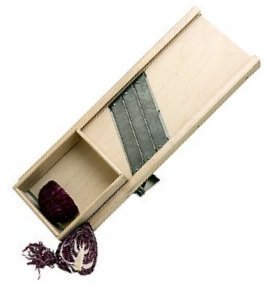Not sure if I am in the correct place, so please redirect me if appropriate.
I am making a couple wooden cabbage slicers and I need to source (or create) some blades. I have the woodworking portion covered just fine, but I am struggling with the steel blades.

Option #1: find someone locally (central Iowa) to make the blades for me
Option #2: make them myself.
If I go with option #2, I would appreciate recommendations on a couple things.
1) grade of steel
2) methods to grind an edge (I would love to do some reading - I am sure it has been covered plenty times before - I just need someone to point me in the correct direction)
I understand that I can probably find an old cheap one at a garage sale or auction, but I love woodworking, and I hope this will turn into a nice project for me (dovetailed joinery, etc).
I appreciate any and all direction.
Thanks,
brausch
I am making a couple wooden cabbage slicers and I need to source (or create) some blades. I have the woodworking portion covered just fine, but I am struggling with the steel blades.

Option #1: find someone locally (central Iowa) to make the blades for me
Option #2: make them myself.
If I go with option #2, I would appreciate recommendations on a couple things.
1) grade of steel
2) methods to grind an edge (I would love to do some reading - I am sure it has been covered plenty times before - I just need someone to point me in the correct direction)
I understand that I can probably find an old cheap one at a garage sale or auction, but I love woodworking, and I hope this will turn into a nice project for me (dovetailed joinery, etc).
I appreciate any and all direction.
Thanks,
brausch

